Schneider Electric LED lamps and tubes
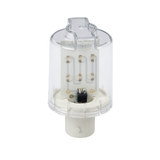


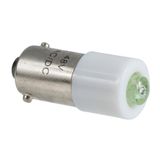
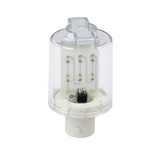
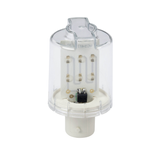
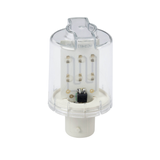

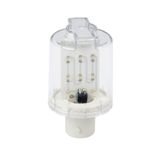
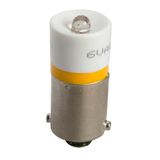

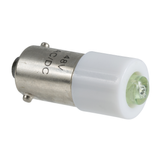
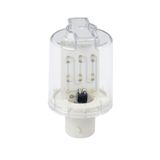
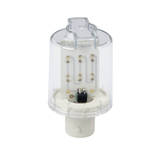
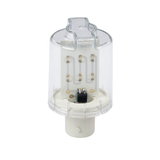
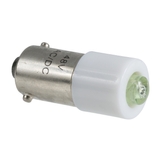
Schneider LED Lighting systems for industrial and commercial projects
Engineered for predictable photometry and low life-cycle cost, these luminaires span linear trunking, recessed panels, downlights, high-bays, floods, and emergency variants. Electrical design targets 220–240 V AC mains with PF ≥ 0.95 and THD ≤ 10–15 % on pro ranges; surge immunity is typically 2 kV (L–N) / 4 kV (L/N–PE) when installed per datasheet. Light engines and drivers are qualified to LM-80 with TM-21 projections to L80/B10 ≥ 50–100k h depending on ambient. Where single fixtures are replaced in legacy rooms, a schneider led light drops into standard cut-outs and caps without rewiring the circuit logic.
Product range and series overview for specifiers
Linear trunking offers through-wiring (3/5/7-core) for mains, control, and emergency conductors; joiners keep optical and electrical continuity across long runs. Recessed panels ship with micro-prismatic, low-UGR lenses for offices; sealed battens and high-bays bring IP65/IK08–IK10 to dusty or wash-adjacent zones. Floods include asymmetric optics for façades and yards. Options cover fixed-output, DALI-2, 1–10 V, corridor function, and wireless room bridges. Emergency is central or self-contained (1 h/3 h) with test inputs that log to BMS.
Technical specifications and standards installers expect
- Optical: CCT 2700–6500 K; SDCM ≤ 3 colour consistency; CRI ≥ 80 standard with CRI 90 on selected interiors. Efficacy commonly 120–170 lm/W on trunking/panels—what most teams call schneider high efficiency leds in practice.
- Thermal/ambient: −25…+45 °C typical; high-bays up to +55 °C with thermal fold-back.
- Compliance: IEC 60598-1/-2 (safety), EN 61000-6-x (EMC), IEC 62386 (DALI-2), photobiological EN 62471 (RG0/RG1).
- Mechanics: IP54–IP66 by family; IK ratings per optic; tool-less gear trays on many series to cut MTTR during service.
Applications and compatibility across building types
Open offices target 500 lx at task with UGR ≤ 19 using panels or suspended lines; labs and classrooms prefer micro-prismatic optics with occupancy/daylight control. Warehouses choose high-bays with aisle optics to lift vertical illuminance on racking; processing halls use IP65 battens with chemical-resistant lenses. Outdoor signage and façades rely on asymmetric floods to limit spill. All bodies mount and wire cleanly with the brand’s protection and control tiers, so panels, drivers, and interfaces share torque values and terminal conventions.
Schneider Smart LED Lighting control and diagnostics
DALI-2 drivers expose energy, runtime, and fault codes; groups and scenes are set in room controllers or gateways. Wireless bridges cover retrofit floors where pulling control pairs is impractical; time-of-day and sensor logic trim baseloads without rewiring. Emergency gear publishes test results to BMS. For production halls, IO-ready channels map status to PLCs so maintenance sees hours-on and driver events alongside machine alarms.
Photometry and glare control for compliant layouts
Low-UGR lenses keep luminance under control in VDT zones; narrow/medium aisle optics focus flux where it matters in racking. CBCP and IES/LDT files allow quick checks in your calculator. For retail and healthcare, CRI 90 with strong R9 renders reds correctly; tunable white (2700–6500 K) supports shift patterns and brand scenes. When luminaires sit under cameras, drivers with low ripple and flicker index stabilize imaging.
Wiring, protection, and thermal practice that prevents callbacks
Keep control pairs (DALI/1–10 V) segregated from mains inside trunking and at the gland plate. Coordinate luminaire SPD level with board-level SPDs to avoid overstress during switching events. Respect Ta: enclosed ceilings need derating or remote drivers; high-bay heatsinks must clear air paths. Through-wiring kits should match conductor class and temperature rating; document core counts on drawings so emergency + control are both catered for without field improvisation.
Schneider Dimmable LED Lighting drivers and interfaces
Where simple zones suffice, 1–10 V provides robust analogue dimming; for grouped floors and analytics, DALI-2 is preferred. Phase-cut is viable on short circuits—check minimum load and inrush limits on the dimmer. Scene recall, fade ramps, corridor function, and daylight hold are available across the platform. In retrofit rooms, confirm driver compatibility before assuming lamp-level dimming will meet the brief; moving dimming to the driver often delivers smoother low-level control and longer component life.
Integration with other Schneider platforms
Lighting drops straight into Acti9 protection, contactor packs, DALI gateways, room controllers, and BMS dashboards from the same ecosystem. Emergency test inputs, power monitoring, and scene control live on the same network as HVAC and blinds, so facilities teams run one toolchain. Mechanical accessories—suspensions, trims, diffusers—share hole centres and fastener stacks with adjacent product families for predictable install minutes.
Selection criteria for B2B engineers
- Lux and glare: hit EN 12464-1 targets; use UGR ≤ 19 where screens are present; choose aisle optics in storage.
- Colour policy: CRI 80 back-of-house; CRI 90 for retail/clinics; hold SDCM ≤ 3 across rooms.
- Control path: DALI-2 for groups/scenes and diagnostics; 1–10 V for simple retrofits; validate address counts vs controller capacity.
- Environment: IP/IK to match dust, wash-down, or impact risk; verify lens chemistry against detergents and oils.
- Service model: tool-less gear trays, standardized hangers, and documented core counts shorten FAT and maintenance.
Advantages of working with Bankoflamps
You receive project-specific pricing aligned to your room schedules, live EU stock visibility before you lock installers, and a named account manager. Quotes typically return in about an hour. Ordering by EAN/MPN prevents variant drift; your portal shows lead times, shipment status, and downloadable price lists. Approved partners can use post-payment up to 30 days. We consolidate partials to reduce freight and keep price-validity windows so phased fit-outs stay predictable. Our team cross-checks optics, drivers, control protocol, SPD level, and mounting kits against your drawings so pallets arrive complete—ready to hang.